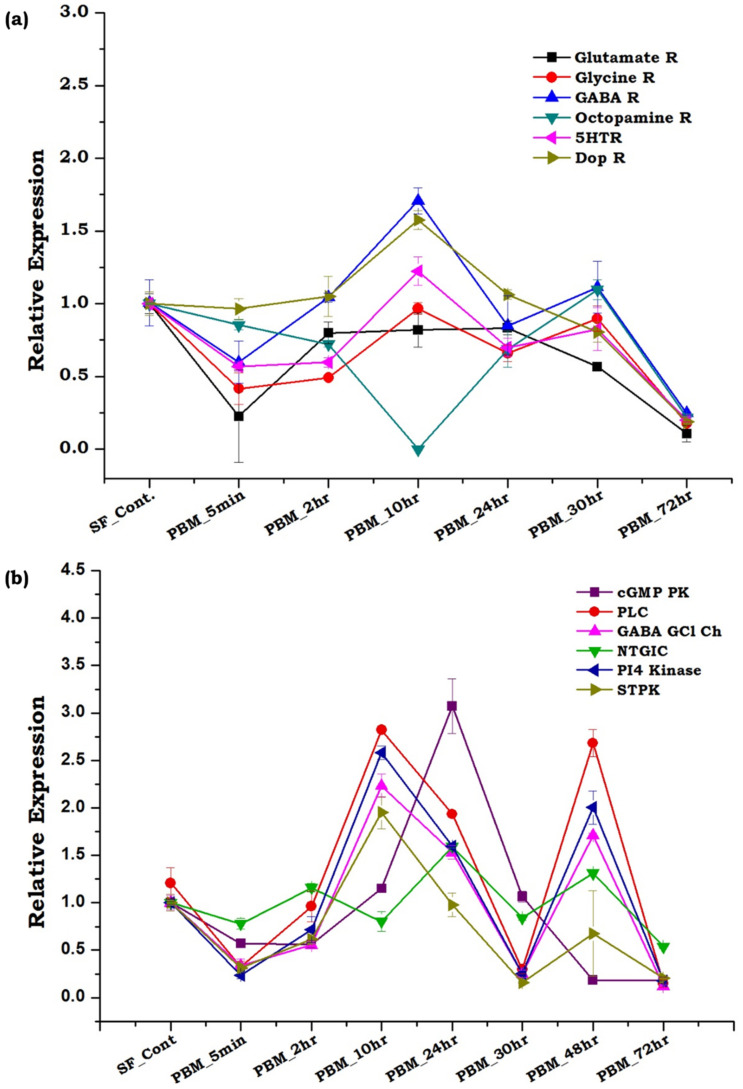Figure 2.
Metabolic switch influences neuro-signaling modulation and inter-organ communication. (a) Transcriptional response of neurotransmitter receptor genes as per the designed blood meal time-series experiment. Brain tissues were collected from 5–6 day old naïve sugar-fed adult female mosquitoes. Then, mosquitoes were provided with blood meal, and the brain tissues were collected at different time points after blood feeding viz. 5 min post blood meal (PBM-5 min), PBM-2 h, PBM-10 h, PBM-24 h, PBM 30 h, and PBM-72 h. Glutamate R: Glutamate Receptor; Glycine R: Glycine Receptor; GABA R: Gamma-Aminobutyric Acid Receptor; Octopamine R: Octopamine Receptor; 5 HTR: Serotonin Receptor; Dop R: Dopamine Receptor. Statistical analysis using two-way ANOVA has implied at 0.05 level the expression pattern of the respective genes was not statistically significant at p ≤ 0.2 at different time points after blood feeding (n = 25, N = 4); (b) Relative expression profiling of the genes involved in signal transduction molecules according to the detailed blood meal time-series experiment. cGMP PK: Cyclic GMP Protein Kinase; PLC: Phospholipase C; GABA GClCh: GABA Gated Chloride Channel; NTGIC: Neurotransmitter Gated Ion Channel; PI4 Kinase: Phosphatidyl-inositol-4-Kinase; STPK: Serine Threonine Protein Kinase. Statistical analysis using two-way ANOVA and Tukey’s test stated that the expression change of the respective genes is statistically significant p ≤ 0.05 (n = 25, N = 4). For Statistical analysis, all the time points and all the transcripts are compared together using two-way ANOVA and the means of the time points are statistically significant. (n = number of mosquitoes from which the respective tissue was dissected and pooled for each independent experiment; N = number of biological replicates).

